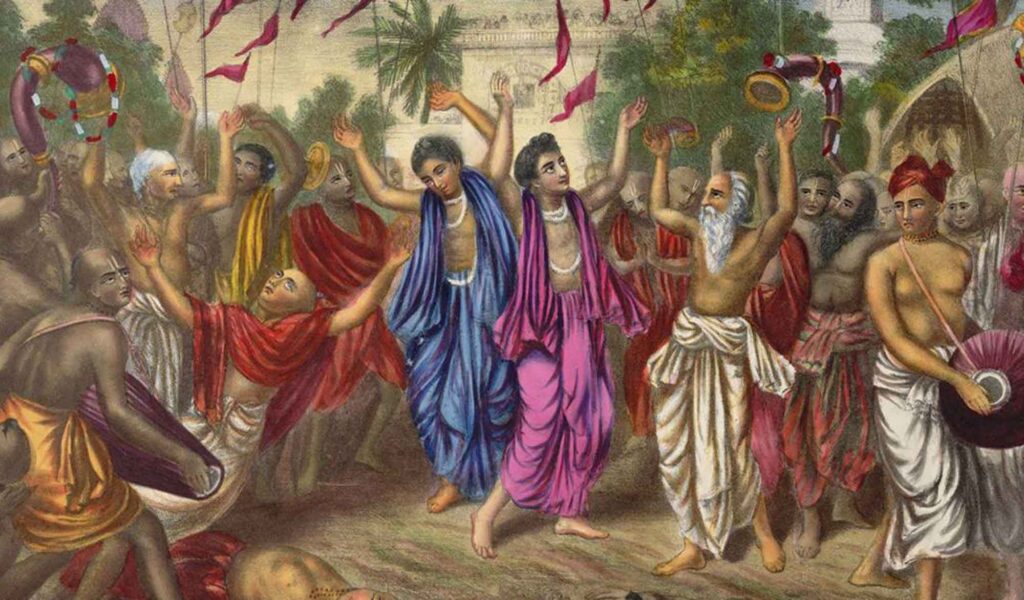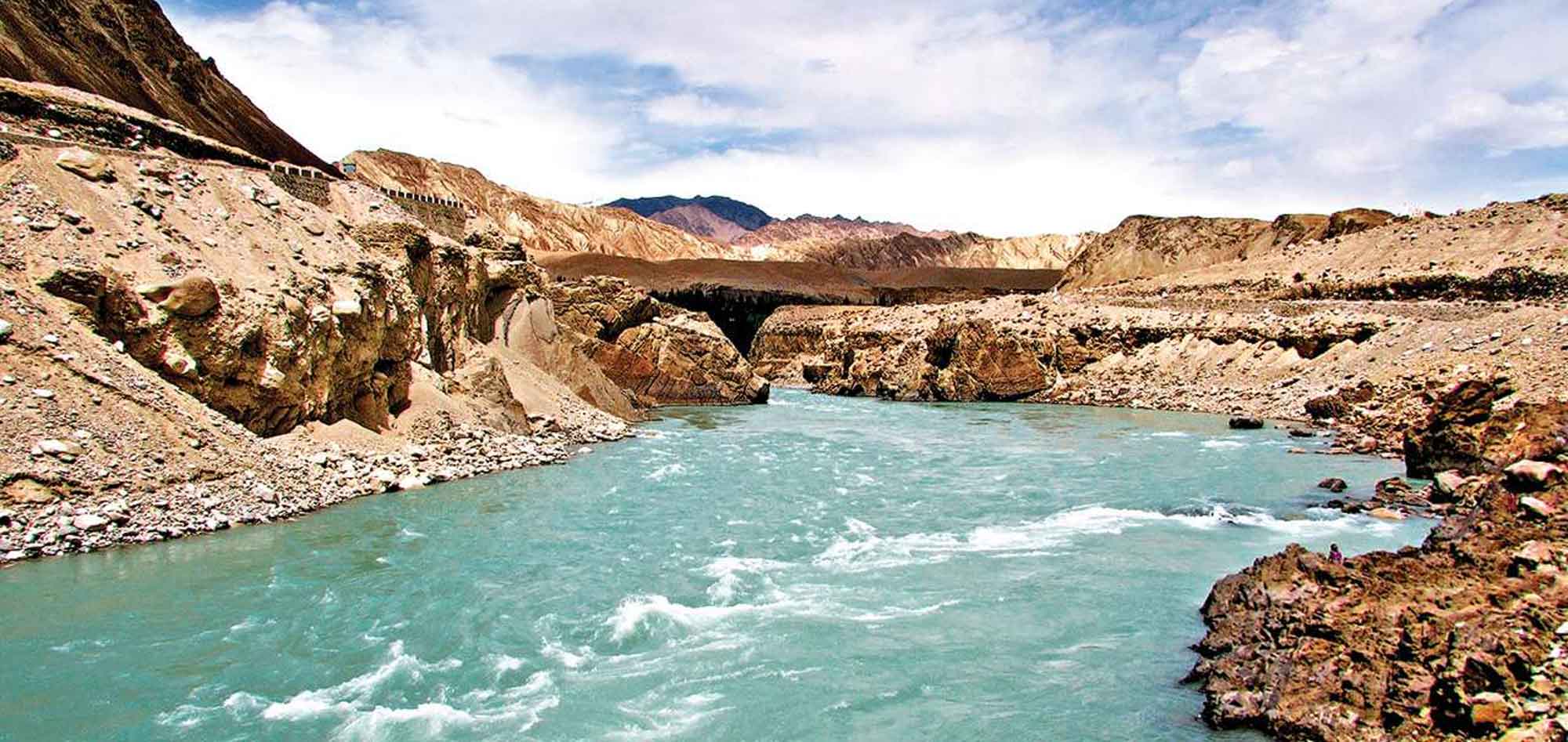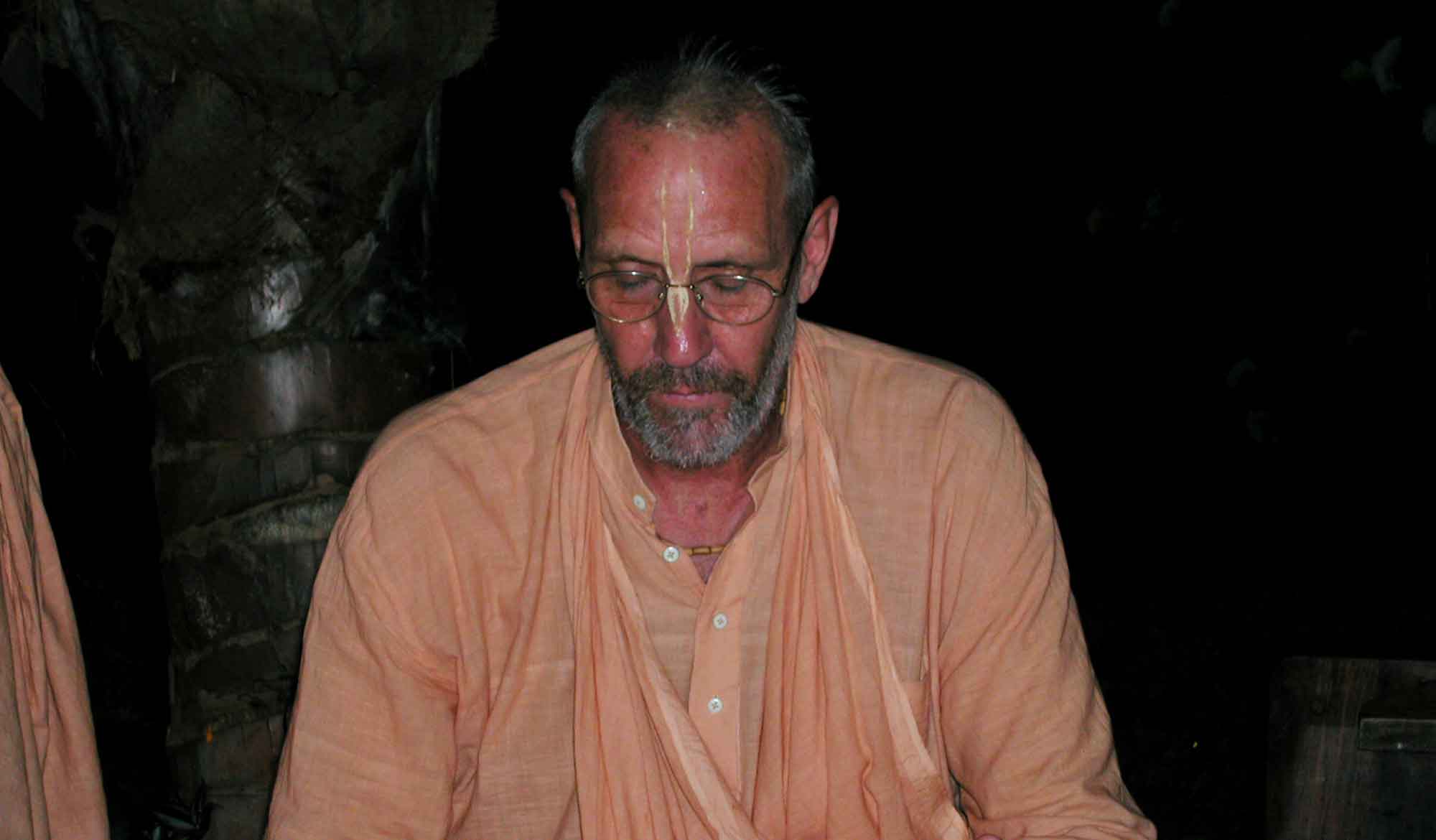by Swami B.G. Narasingha
"Mahāprabhu as Rasarāja-Mahābhāva" was written by Swami B.G. Narasingha in 1992. This article explores the meaning of the title 'Mahāprabhu' and shows how it can only be applied to Śri Caitanya. Upon reading this article one godbrother asked Narasingha Mahārāja, "How do you think of these things?" to which Narasingha Mahārāja replied, "How do you not?"
The general meaning of Mahāprabhu is given as ‘Great Master.’ No doubt Śrī Kṛṣṇa Caitanya Mahāprabhu is the ‘Great Master.’ Mahā means great and prabhu means ‘Lord’ or ‘Master’.
Unfortunately, it is sometimes the tendency of the conditioned souls in material existence to bestow the title ‘Mahāprabhu’ on a particular spiritual master. This is the case of Śrī Vallabhācārya.
Vallabhācārya was closely associated with Śrī Caitanya and by the grace of the Lord he became a disciple of Gadādhara Paṇḍita. Later on, after the death of their father, the sons of Vallabhācārya could not tolerate that their father had become a humble follower of Śrī Caitanya. Being envious of the fame and glory of the Lord, they decided to attribute the pastimes of Śrī Caitanya to Vallabhācārya. They successfully propagated their cult in a remote area of Southern Rajasthan where the pious souls had not yet heard of Śrī Kṛṣṇa Caitanya Mahāprabhu. At that time, the sons of Vallabhācārya popularized their father as ‘Mahāprabhu,’ the ‘Great Master’ among the uninformed.
It has long since been a sensitive issue between the Gauḍīya sampradāya and the Vallabha sampradāya. Should Śrī Caitanya alone be called ‘Mahāprabhu’ or is it a generic term befitting any and all ‘Great Masters’?
On the basis of the identity if Śrī Kṛṣṇa Caitanya given in the śāstra and sung by the ācāryas (mahāprabhu śrī caitanya, rādhā-kṛṣṇa nahe anya) it is Śrī Caitanya alone who is properly known as ‘Mahāprabhu.’ It is our humble opinion that not even viṣṇu-avatāras or even Svayam-Bhagavān Śrī Kṛṣṇa of Goloka can be known as ‘Mahāprabhu’.
It is the words of Śrīla Kṛṣṇa Dāsa Kavirāja Gosvāmī as echoed by Śrīla Bhaktisiddhānta Sarasvatī Ṭhākura, mahāprabhu śrī caitanya, rādhā-kṛṣṇa nahe anya that gives us the hidden meaning of ‘Mahāprabhu.’
Rādhā and Kṛṣṇa have appeared as one in the transcendental eternal form of Śrī Caitanya. Here ‘mahā’ means Rādhārāṇī who is also known as Mahā-bhāva, and ‘prabhu’ means Rasarāja, or Kṛṣṇa. Mahāprabhu means Rasarāja-Mahābhāva. Rasarāja, the Supreme Enjoyer of rasa, the emporium of rasa, Śrī Kṛṣṇa. And Śrīmatī Rādhārāṇī, Mahābhāva – the essence of hlādinī-śakti have appeared as one ‘Mahā-Prabhu’ as Śrī Kṛṣṇa Caitanya.
It is not possible for a jīva soul belonging to the marginal potency of Godhead at any time to attain to the position of the Supreme Lord, nor is it possible for the marginal potency to ever attain the ecstatic platform of mahā-bhāva. This alone is the position of Śrīmatī Rādhārāṇī.
Thus, Śrī Kṛṣṇacandra has accepted the color and mood (mahā-bhāva) of Śrīmatī Rādhārāṇī and appeared as Śrī Kṛṣṇa Caitanya to taste the sweet mellow of Her confidential service. Therefore, Śrī Kṛṣṇa Caitanya is alone ‘Mahāprabhu’ and there can be no other.
More Articles by Swami B.G. Narasingha
The Sacred River Sindhu/Indus
‘The Sacred River Sindhu/Indus’ was posted by Swami B.G. Narasingha on his blog, narasingha.net, on October 2nd, 2011. In this short article, Narasingha Maharaja explains the significance of the River Sindhu and his pilgrimage to it. This article was later expanded into a bigger article called ‘Sindhu River – How India Got Her Name.’
Instructing the Guru
This article “Instructing the Guru” was written in April 2018 by Śrīla Narasingha Mahārāja who answers a question concerning a previous article wherein a Vaiṣṇavī writes a letter to her dīkṣā-guru and explains to him about the importance of śikṣā. In response, a question was raised by a devotee about the etiquette of a disciple instructing her guru.
The Atomic Ray – From Uniform Consciousness to Individual Conscious Units
In “The Atomic Ray - From Uniform Consciousness to Individual Conscious Units” written in 1996 Śrīla Narasiṅgha Mahārāja discusses the constitutional position of the jīva, according to Bhaktivinoda Ṭhākura and Śrī Caitanya-caritāmṛta.












